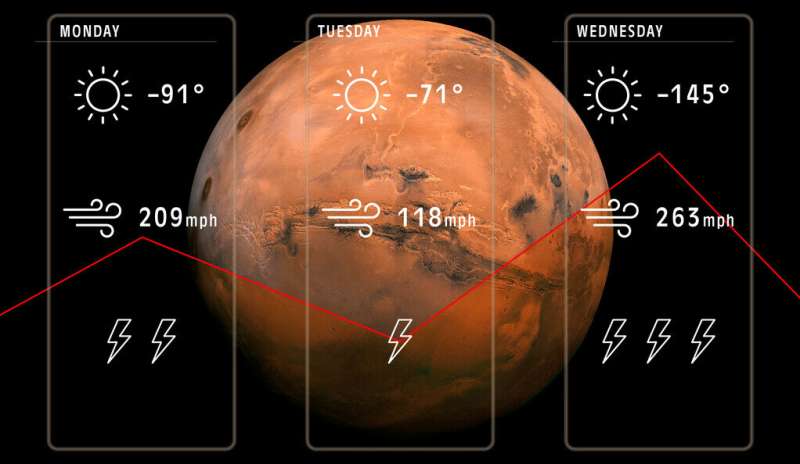Annular modes affect the jet stream, precipitation, and cloud formations across the planet. They explain up to one-third of the variability in wind-driven "eddies," including blizzards in New England and severe storm outbreaks in the Midwest.
After noticing that the regularity of dust storms in the Southern Hemisphere of Mars was similar to the repeatability of Earth's eddies, Battalio conceived of the new study. Specifically, after looking at 15 years of Mars atmospheric observations in a public dataset, he discovered that Mars also has annular modes, just as Earth does.
Battalio's lab supervisor, Juan Lora, an assistant professor of Earth and planetary sciences at Yale, suggested that they also look for annular modes on Titan. Although there are very few atmospheric observations for Titan, Lora has developed a highly regarded global climate model for the moon called the Titan Atmospheric Model (TAM).
Indeed, Battalio and Lora found that annular modes are also prominent in their Titan simulations. In fact, the researchers found that annular modes on Titan— and on Mars—are even more influential than they are on Earth. They appear to be responsible for up to half of the wind variability on Mars and two-thirds of the wind variability on Titan.
"Methane clouds and surface changes caused by methane rain on Titan have been observed before," said Lora, who is co-author of the study. "And now it seems these events are connected to shifts of Titan's strong jet stream, influenced by its annular modes."
Added Battalio: "The fact that we have found annular modes on worlds as different from Earth as Mars and Titan also means they may be ubiquitous in planetary atmospheres, from Venus, to the gas giants or exoplanets."
As for Mars, its dust storms range from tiny dust devils that are constantly occurring to global dust storms that encircle the planet once every few years. The smaller storms last less than a day, but the global events may last months. There are also regional events that last days to weeks.
"Understanding and predicting these events is vital for the safety of missions, particularly those that rely on solar power, but also for all missions as they land on the surface," Battalio said. "During larger regional events, the dust can become so thick at times as to make day seem as dark as the middle of the night. Even without a large, dramatic event, regional storms are a periodic feature."
It is this periodic nature, researchers said, that could allow for annular modes to predict dust storms. Mars, Titan, and Earth's modes each occur regularly. Because the annular modes impact the eddies that cause dust storms, real-time analysis of the annular modes enables simple predictions of dust storms without having to rely on a complex model.
The Opportunity robotic rover landed on Mars in 2004 for a 90-day mission; it operated for more than 14 years, partly by hibernating during dust storms. The Interior Exploration using Seismic Investigations, Geodesy and Heat Transport (InSight) robotic lander arrived on Mars in 2018.
"A global event is what finally ended the Opportunity rover, but the slow accumulation of dust is currently endangering the survival of the InSight mission," Battalio said.
Explore further



